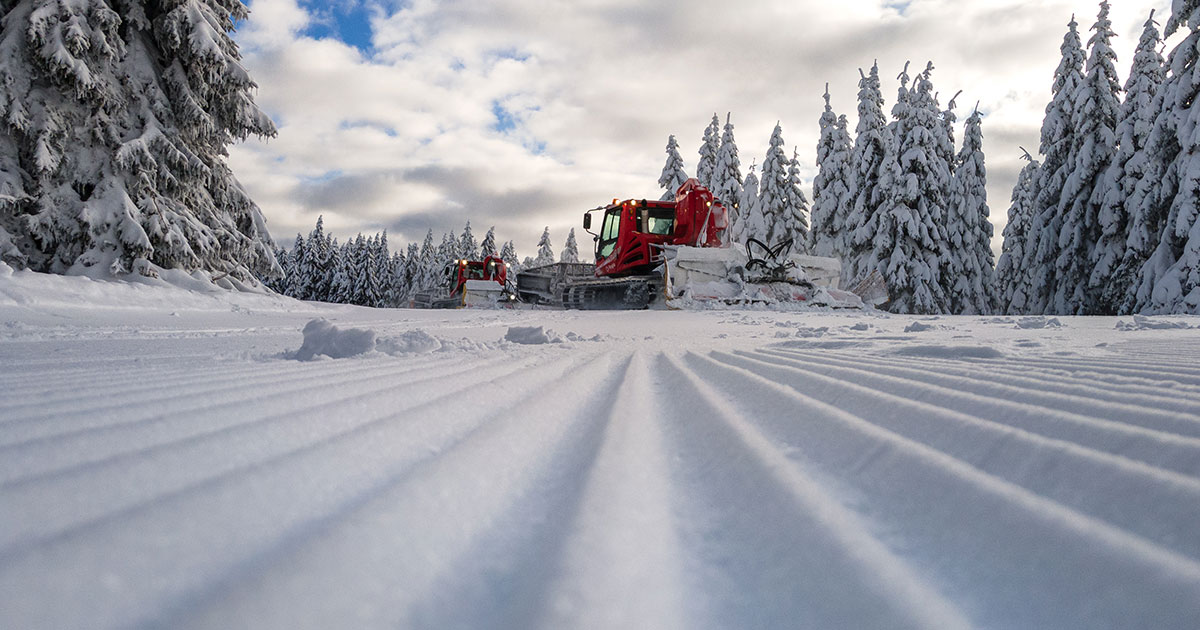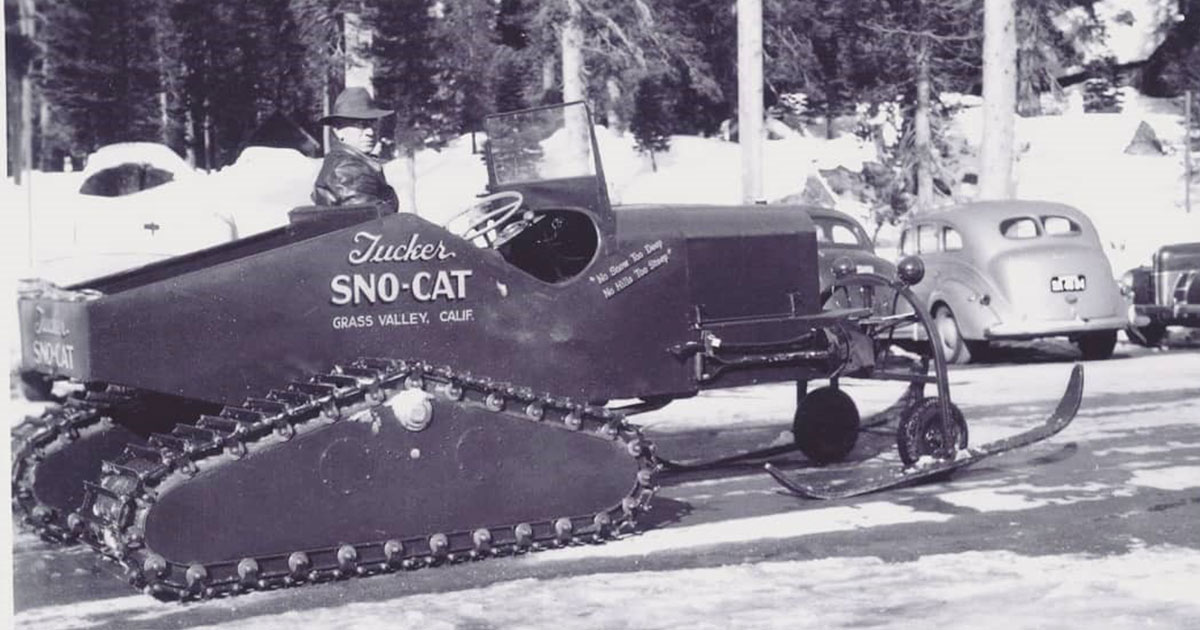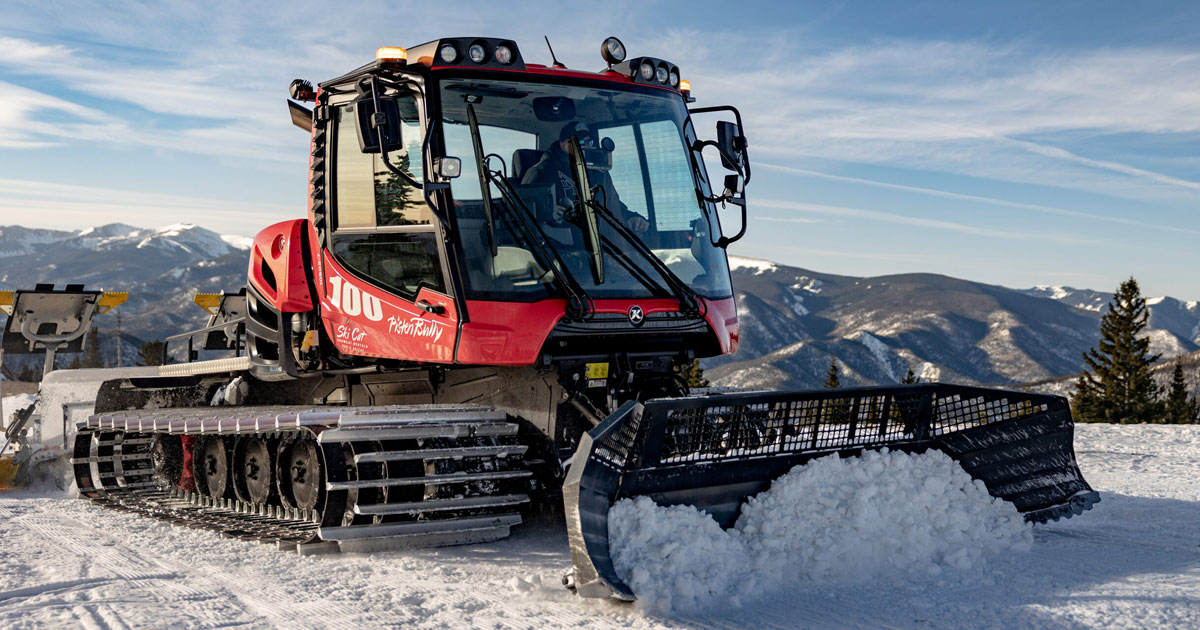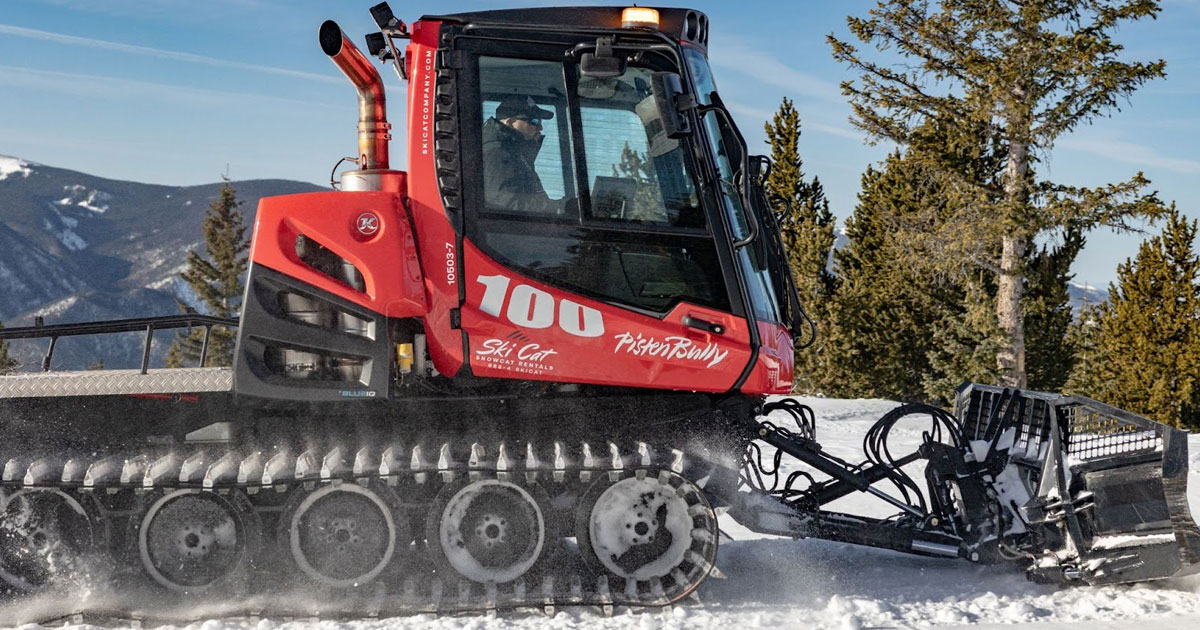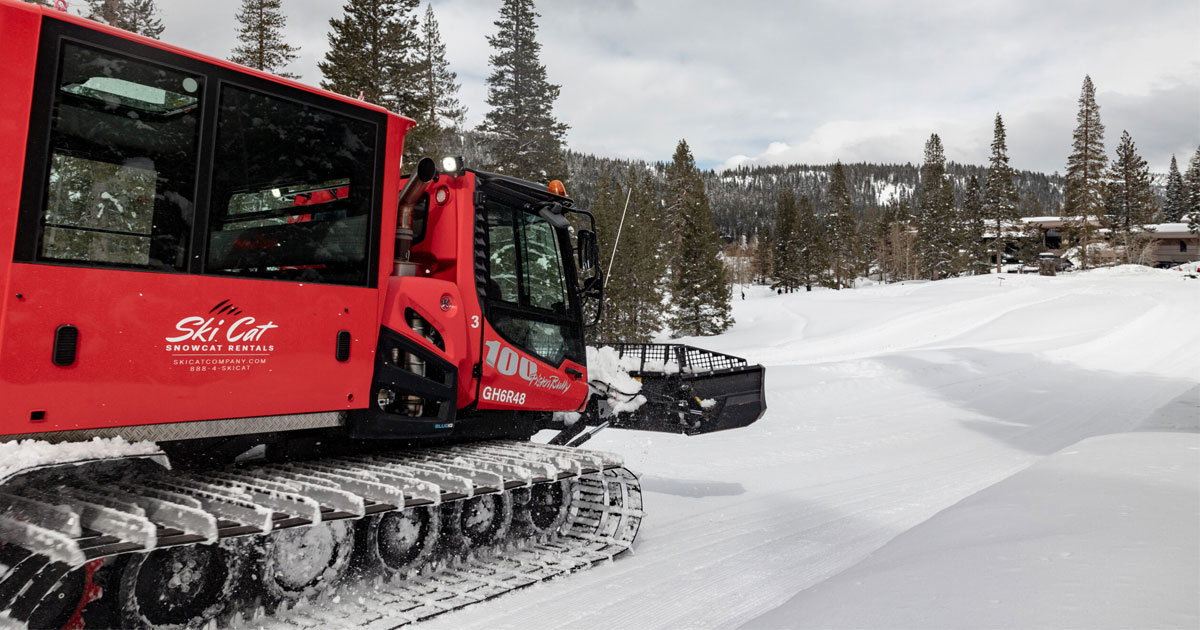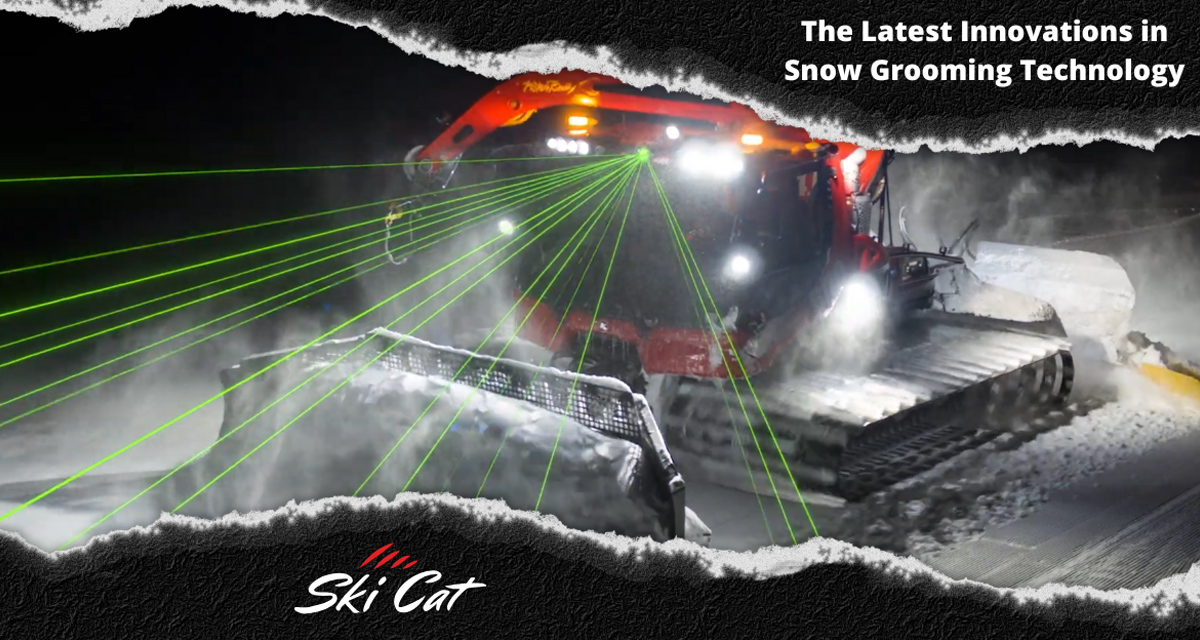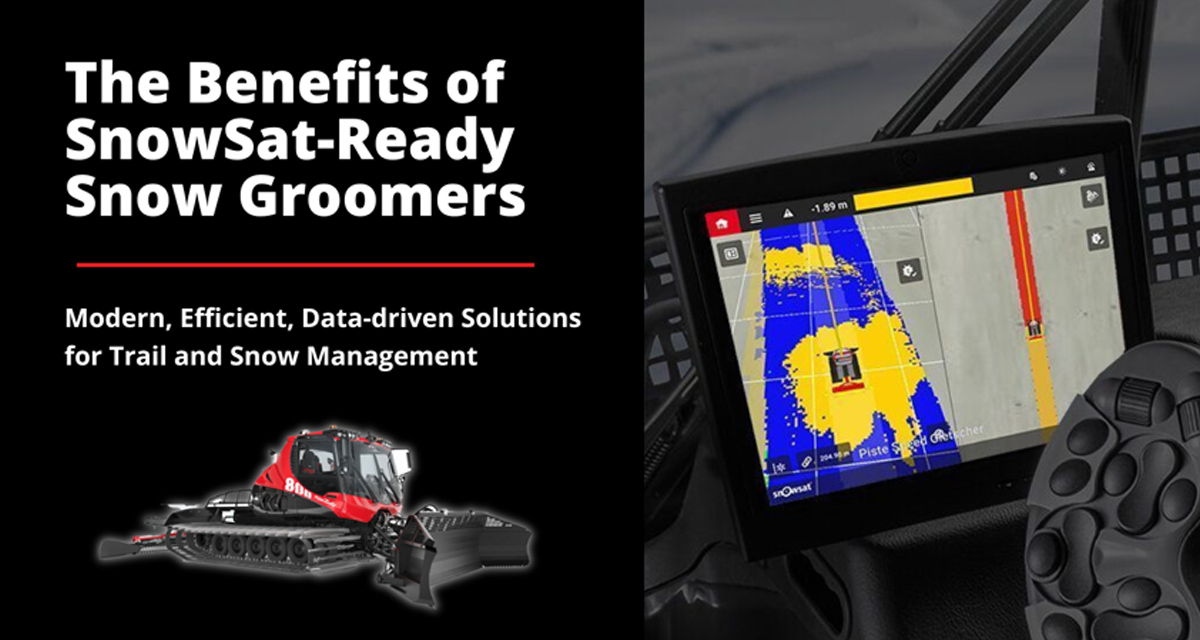Table of Contents
ToggleSnow groomers are vehicles that are used to “groom” or flatten down and prepare the snow on ski slopes and snowmobile trails. This process is necessary for the upkeep of trails and slopes, as large amounts of snowfall or unpredictable weather can create uneven trails that can be dangerous to skiers, snowboarders, snowmobilers, and other outdoor enthusiasts. These machines have many names around the world, but their purpose is the same: to make snowy terrain and wintery conditions safely navigable for many types of traffic.
Learn more about these amazing machines from Ski Cat Company.
What Is a Snow Groomer Called?
Snowcats or snow groomers are used to groom the snow for skiing and snowmobiling trails, as well as for transportation in snowy conditions. As mentioned, they are known by various names depending on where you are in the world. In North America, they are commonly referred to as snow groomers, trail groomers, or snowcats. In the United Kingdom, though, they are referred to as piste machines or piste bashers (trails are called pistes in the UK).
History of Snow Groomers
As the needs of snowmobile and ski trails have changed over time, so have the methods of grooming. Before modern snow groomers, horse-pulled wagons using agricultural tracks smoothed the snow down so that trails could be used by sleighs and tires. As the recreational skiing industry took off, resorts adopted the concept of snow grooming, with the first agricultural tractors pulling plows to compact the snow as it fell.
As moguls on ski trails became more popular, they proved a challenge to groom in the same manner as the flat trails. This led to the invention of a snow groomer machine with the necessary suspension to be able to handle the moguls. These snow groomers could go over the moguls and flatten the snow without flattening the moguls themselves.
Polar Expeditions and Improving the Snowcat
While ski resorts were using the first snow groomers to groom modern ski slopes, Arctic expeditions were also using snowcats to explore the rugged terrain in the frozen tundra. The first disastrous attempt to reach the South Pole with primitive tracked snow vehicles happened in 1911 and 1912. The expedition never reached its destination with the vehicles because the vehicle designs were not properly adapted to the harsh weather. The group turned to using ponies to try and complete the journey but failed once again, costing the entire expedition their lives.
After the Second World War, the proper track technology was honed using the same approach as wartime tracked tanks. With this vital tool, manufacturers were able to develop a truly reliable on-snow vehicle.
Tucker Sno-Cat Corporation rose to the forefront of the post-WWII snowcat industry. Their name became synonymous with what is now commonly called the “snowcat.” Over the next several decades, other companies began manufacturing snowcats, including the Logan Machine Company (LMC), DeLorean Motor Company, and PistenBully.
The First Snowcats
The first iterations of the snowcat with the new track technology were remarkable for their time and greatly enhanced the day-to-day operations of ski resorts and Arctic exploration. However, there were still kinks to work out. The tracks had teeth that pulverized the snow chunks and ice into a powder, which was then smoothed over with a shovel.
This process took a tremendous amount of power from the snowcat and put a lot of wear and tear on the machine. For this reason, snowcats were quite expensive to purchase and considered a luxury. By the 1980s, the designs were improved and became much more accessible to purchase or lease.
The Modern Day Snowcat
As we see many vehicles being converted to hybrid or electric, the same goes for snowcat engines. The modern snowcats we see today are often hybridized or made more efficient to cut emissions being released into the environment. Another reason for this is the cost of purchasing a snowcat. In the past, snowcats have historically been very expensive and inaccessible for smaller ski resorts or companies — thus, the benefit of leasing a snowcat rather than purchasing one. PistenBully has released information about their highly-anticipated all-electric snowcat in the next few years.
This new fleet of snowcats from PistenBully will have several other features in addition to an electric battery-powered motor. These features include a smarter GPS to navigate in the snow, added metrics to measure snowfall over a large swath of area, and the ability to see through the fallen snow.
What Do They Use To Groom Snowmobile Trails?
Snowcats are typically used to groom the snow on snowmobiling tracks in addition to ski slopes. The vehicles are built to smooth down the snow on the trail to create a flat, even surface for snowmobiles to use. The tracks on the underside of the vehicle are usually steel, rubber, or aluminum. As they are driven, the tracks rotate around the interior rubber wheels and flatten the snow as they go over.
These machines are designed for snowy surfaces that may be uneven before being groomed. The tracks have a large surface area and limit the possibility of the snowcat tipping over or losing traction during use. In addition to being used for leveling snow on trails, snowcats can also be used for logging in marshy locations, wilderness seismic studies, and polar expeditions. Their optimized design allows for these uneven surfaces and areas to be navigated safely.
What Is the Top Snow Groomer Brand?
The top snow groomer brand is PistenBully, which is esteemed for its capabilities, performance, and maneuverability. These snowcats have a closed cab with a large plow in the front, which makes them great vehicles for long, rugged treks along snow-filled terrain. Their steel tracks are designed to navigate large snow banks and terrain safely.
The PistenBully snow groomers are also ideal for a variety of surface areas, both flat and hills. They can be used to groom the snow on the side of a mountain or trails within the trees.
Where Are PistenBully Snow Groomers Made?
PistenBully snow groomers are made in Germany by Kässbohrer Geländefahrzeug AG. The PistenBully 120 B snow groomer was introduced in 1969 and made much of the aforementioned headway in the industry. Since then, PistenBully has been an industry frontrunner. The company shows its commitment to quality and sustainability through responsibility to its customers, the environment, and resources.
Leasing Versus Purchasing
If you own a winter sports business, a lodge, or other commercial property, or if you frequently need to traverse difficult terrain in wintery weather, you may want to consider leasing a snowcat. Similar to leasing other types of machinery or vehicles, leasing a snowcat instead of purchasing can be a preferable option for individuals or businesses of many types. Leasing offers you greater access to the most cutting-edge snowcats for commercial use. In addition to the upfront cost to purchase the vehicle, maintenance, and upkeep costs can be hefty with a large piece of equipment such as a snowcat. When you lease, these extra costs don’t fall on your shoulders.
Benefits of Renting/Leasing a Snowcat
Leasing offers you the ability to access and use the newest, up-to-date machinery. If you choose to lease from SkiCat Company, we have a sizable fleet of snowcats to offer, and we can help you choose the snowcat that best fits your needs. Leasing also offers flexibility in the leasing period. You have the option to choose from several strategies to find what works best for you.
Maintenance costs for a snowcat are typically high because of the intricacies of the machine. Checking the fluids and filters is constantly needed throughout the season and in the off-season, too. If you are only using the snowcat for the winter season, you can rest assured that all yearly maintenance required will be done before you start using the vehicle.
Besides the cost of maintenance, the effort of even finding the right machine can be a big undertaking. Another perk of leasing is that all of the details are taken care of for you prior to picking up the vehicle. We ensure each snowcat is in impeccable shape before we lease it out to customers.
Things To Consider Before Leasing
After deciding to lease, it’s important to consider factors such as determining who is going to be responsible for handling and driving the machine. It’s crucial to fully explain how the vehicle works and provide proper training to anyone who may be handling it. A snowcat is an intricate machine, and it is crucial to use it correctly for the benefit of all involved. Therefore, it’s very important to take the time to lay out the details and inform the handler on how to care for and operate the snowcat properly.
During the leasing period, there will be other costs related to snow maintenance, and they should all be detailed in a snow maintenance budget. The leasing of the snowcat is one part of the entire snow upkeep process, but there are other components, such as salting areas or snow removal. It’s important to account for each aspect of the snow maintenance process and prepare for any additional things that might occur.
PistenBully Snowcats from Ski Cat Company
Ski Cat Company offers leasing opportunities for snowcat snow groomers so you can utilize these machines without the commitment of purchasing. Leasing provides you with a few scheduling options and the ability to access the best and newest lines of PistenBully snowcats. Another perk is that leasing is a cost-effective option for business owners who are balancing an overall snow maintenance budget.
All in all, snow groomers have many names, but they all serve the same purpose. Snow groomers are closed-cab vehicles with large tracks that are used to flatten and groom snow in areas of snowy terrain. These machines can also be used to transport materials and people in snowy conditions or rugged landscapes. The evolution of these machines has been ongoing, and they continue to improve. Since their inception, snow groomers have been a vital part of the skiing and other winter-related industries. The next and newest chapter of snow groomers will be fully electric vehicles to reduce environmental impact as they continue to be crucial to various industries.
Contact The Ski Cat Company to learn more about leasing a snowcat for your next season!
